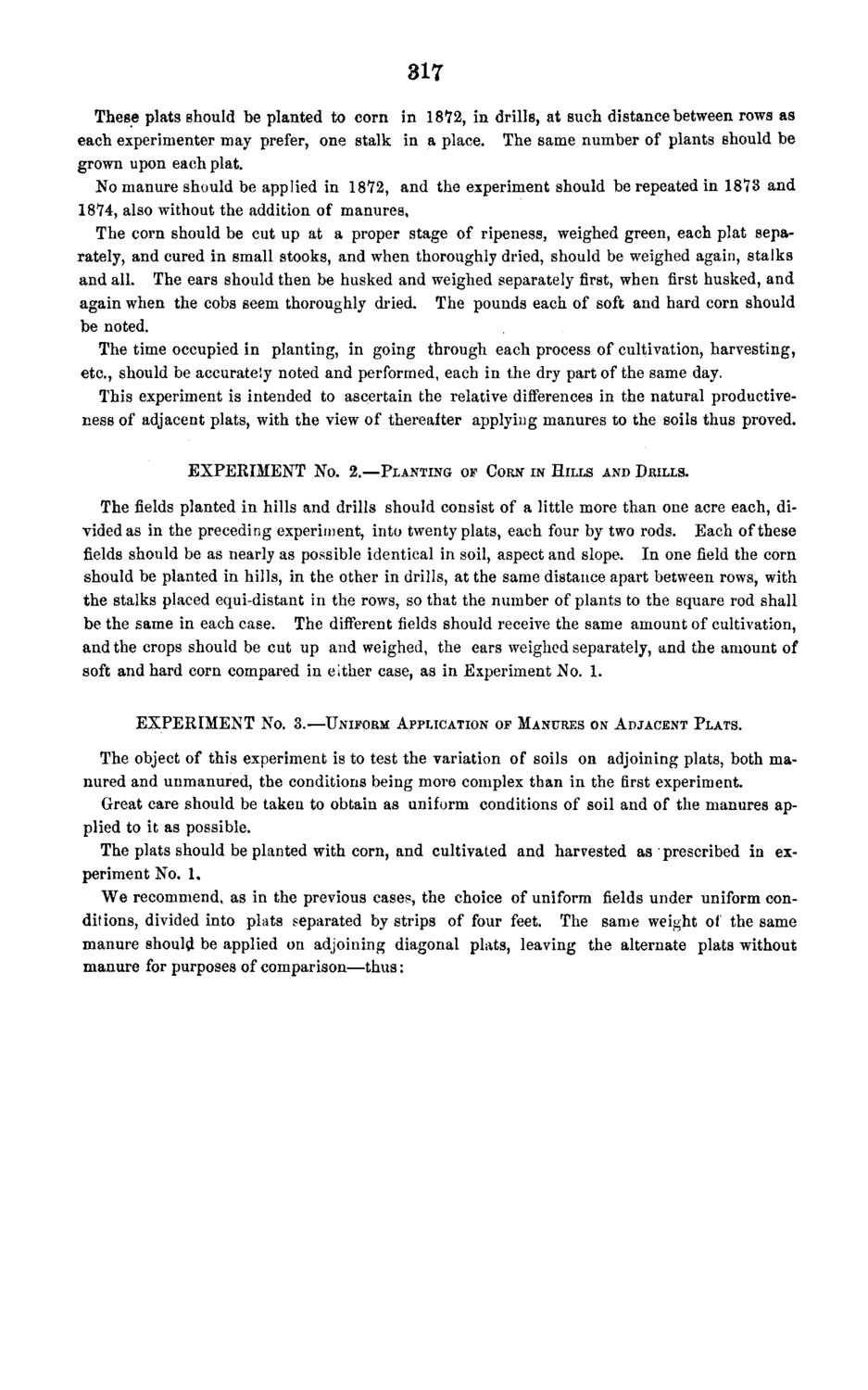| |
| |
Caption: Board of Trustees Minutes - 1871
This is a reduced-resolution page image for fast online browsing.

EXTRACTED TEXT FROM PAGE:
317 These plats should be planted to corn in 1872, in drills, at such distance between rows as each experimenter may prefer, one stalk in a place. The same number of plants should be grown upon each plat. No manure should be applied in 1872, and the experiment should be repeated in 1873 and 1874, also without the addition of manures, The corn should be cut up at a proper stage of ripeness, weighed green, each plat separately, and cured in small stooks, and when thoroughly dried, should be weighed again, stalks and all. The ears should then be husked and weighed separately first, when first husked, and again when the cobs seem thoroughly dried. The pounds each of soft and hard corn should be noted. The time occupied in planting, in going through each process of cultivation, harvesting, etc., should be accurately noted and performed, each in the dry part of the same day. This experiment is intended to ascertain the relative differences in the natural productiveness of adjacent plats, with the view of thereafter applying manures to the soils thus proved. EXPERIMENT No. 2.—PLANTING OF COKN IN HILLS AND DRILLS. The fields planted in hills and drills should consist of a little more than one acre each, divided as in the preceding experiment, into twenty plats, each four by two rods. Each of these fields should be as nearly as possible identical in soil, aspect and slope. In one field the corn should be planted in hills, in the other in drills, at the same distance apart between rows, with the stalks placed equi-distant in the rows, so that the number of plants to the square rod shall be the same in each case. The different fields should receive the same amount of cultivation, and the crops should be cut up and weighed, the ears weighed separately, and the amount of soft and hard corn compared in either case, as in Experiment No. 1. EXPERIMENT No. 3.—UNIFORM APPLICATION OF MANURES ON ADJACENT PLATS. The object of this experiment is to test the variation of soils on adjoining plats, both manured and unmanured, the conditions being more complex than in the first experiment. Great care should be taken to obtain as uniform conditions of soil and of the manures applied to it as possible. The plats should be planted with corn, and cultivated and harvested as prescribed in experiment No. 1, We recommend, as in the previous cases, the choice of uniform fields under uniform conditions, divided into plats separated by strips of four feet. The same weight of the same manure should be applied on adjoining diagonal plats, leaving the alternate plats without manure for purposes of comparison—thus:
| |